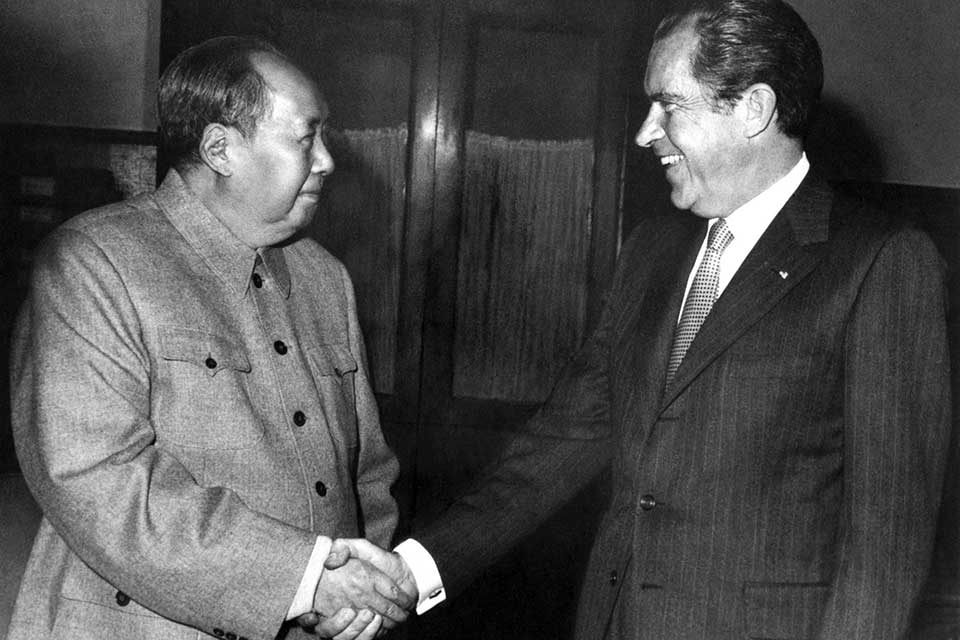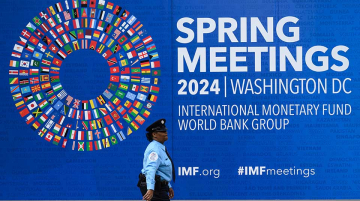
By Kevin P. Gallagher and Cecilia Han Springer
50 years ago, from February 21-28, 1972, U.S. President Richard M. Nixon visited Beijing, beginning the process of normalizing diplomatic relations between the US and China. In the Shanghai Communiqué issued during that historic meeting, Nixon and Chinese leader Mao Zedong expressed hopes of expanding economic ties and diplomatic exchange between the two countries, and of easing tensions stemming from the U.S.-China relationship in Asia and the rest of the world.
While each country has a growing list of legitimate differences with the other, on the 50th anniversary of that historic meeting, the U.S. and China should regain the spirit of those early ties and collaborate to provide global public goods.
Today, the US and China are the world’s two largest economies. China stands on the global stage not only on the strength of its domestic economy but also as a major player in global finance and investment through its Belt and Road Initiative (BRI).
For development finance in particular, China has mobilized the lion’s share of overseas development finance in the 21st century. China’s lending to other countries has essentially matched the amount of financing to sovereign governments provided by the World Bank from 2008 to 2019. In sub-Saharan Africa, Chinese development banks financed 2.5 times more infrastructure than other major bilateral financers combined.
Although U.S.-China relations are in a current freeze, the anniversary of Nixon’s visit to China merits reflection on how initiatives like B3W and the BRI could set a new tone for the next 50 years of US-China relations.
Empirical research by the Boston University Global Development Policy Center and others has shown China’s overseas development finance has benefitted the Global South, unlocking infrastructure bottlenecks and facilitating technology transfer.
However, China’s overseas development finance is also associated with debt distress in host countries, carbon-intensive infrastructure development (especially in the power sector), and other social and environmental risks.
Following last year’s announcement on the new Build Back Better World (B3W) initiative by the U.S. and G7 countries, in 2022, the U.S. is poised to clarify what exactly B3W will be, and how its scale and composition might compare to China’s overseas activity. A U.S.-led effort should not be framed as countering the BRI, but rather as a parallel effort to meet shared goals in addressing global development finance needs in a low-carbon and inclusive manner.
To truly be parallel to the BRI, B3W will require a massive increase in scale. The U.S. may need to work with G7 partners to re-capitalize existing development finance institutions (DFIs) and possibly create new ones.
The U.S. and China can race to the top by financing infrastructure that is compatible with the Paris Agreement and the 2030 Sustainable Development Goals. In particular, there is an investment gap of more than $700 billion per year to finance renewable energy capacity additions through 2050. The U.S. and China are leading manufacturers of wind and solar technology, and there is plenty of space for both countries in a market on the precipice of booming. Indeed, Europeans are already cooperating with China in these areas. As Chinese development banks have decreased the scale of their lending in recent years, Chinese contractors in Africa are now seeking financing from European banks and export credit agencies instead.
Chinese DFIs have demonstrated a competitive edge with respect to the scale of their investment capability, the quality of their infrastructure, and the speed with which they can disburse financing and infrastructure packages. U.S. and Western-led development finance institutions can offer better pricing, have decades of knowledge in developing regions, and have developed a battery of due diligence safeguards that can lower the risks of large projects. These are areas in which DFIs from both countries can learn from each other to the benefit of strategic overseas initiatives.
Although U.S.-China relations are in a current freeze, the anniversary of Nixon’s visit to China merits reflection on how initiatives like B3W and the BRI could set a new tone for the next 50 years of US-China relations. Together, or at minimum in parallel, both countries have an interest in closing global infrastructure gaps in a manner that rewires the world economy on a pathway to a low-carbon future.
Kevin Gallagher is the director of the Boston University Global Development Policy Center and Cecilia Han Springer is the Assistant Director at GDPC’s Global China Initiative









